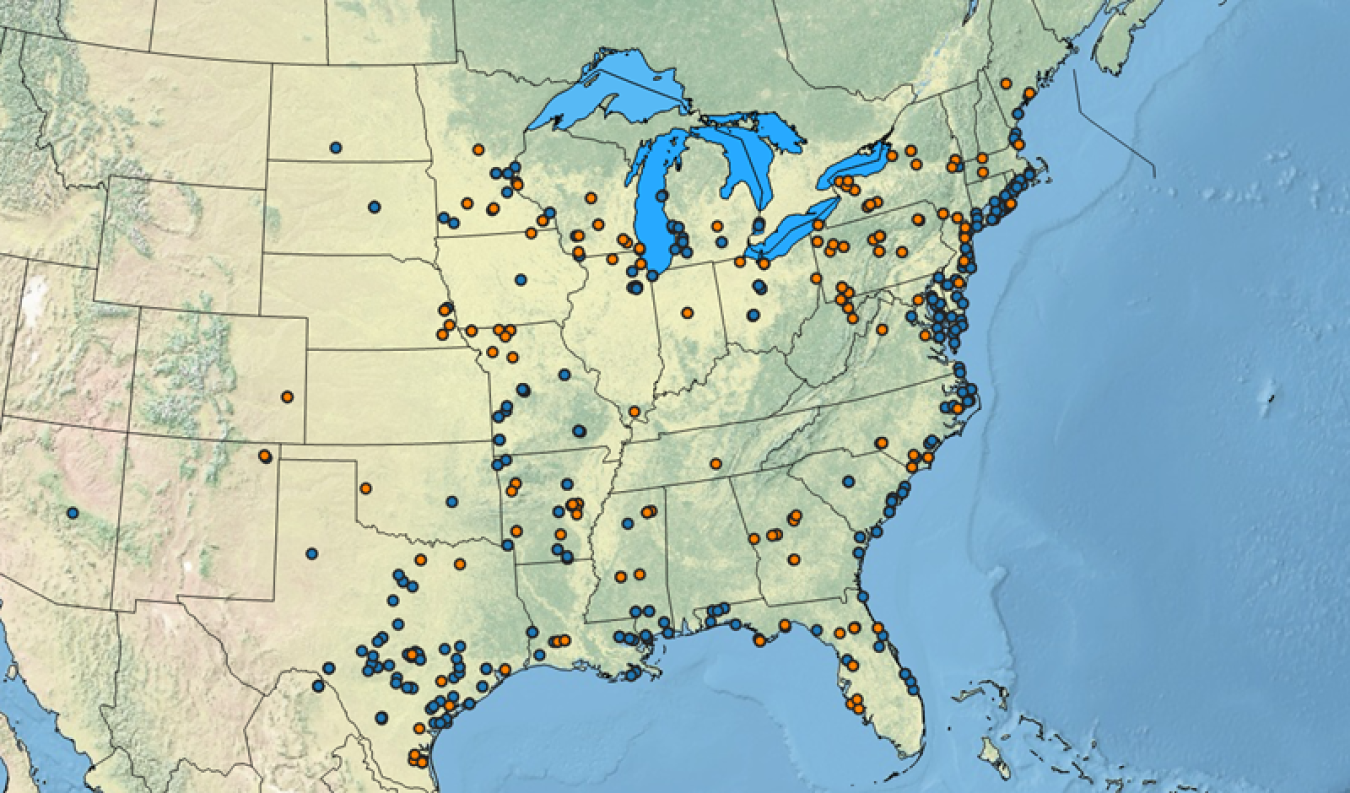
The Science
Roughly half of all flowering plants are “polyploid,” meaning that they have more than two sets of chromosomes, which contain the plants’ genes and DNA. Scientists believe that polyploidy is a major driver of adaptation. This is because the larger numbers of copies of each gene in polyploid genomes can increase an organism’s genetic diversity. This in turn can drive shifts in that organism’s preferred habitat, its adaptability, and its fitness. To test the effects of increased ploidy, this research compared the genomic diversity, environmental niche, and fitness responses across different climates for tetraploid (four copies) and octoploid (eight copies) varieties of switchgrass. The research found that octoploids contained novel combinations of genetic diversity. This diversity makes these octoploid switchgrasses generalists, able to tolerate a broad range of environmental conditions and expand their range into new areas compared to the specialist tetraploid switchgrasses.
The Impact
The study indicates that octoploids represent a unique combination of genetic variation that has helped switchgrass thrive in new environments. This information will aid researchers in bioenergy and other fields breeding varieties of switchgrass that harness natural diversity and that can navigate rapidly changing environments. This would facilitate the use of switchgrass as a biofuel source and for restoring habitats. More broadly, the research may help scientists conduct similar analyses of other economically valuable crops that have histories of polyploidy.
Summary
This research used a combination of genomic, quantitative, genetic, landscape, and niche modeling approaches to contrast the diversity of tetraploid (4X) and octoploid (8X) switchgrass across hundreds of naturally occurring genotypes (in this case, a plant’s complete genetic makeup) and 10 common gardens. The team included researchers from the University of Texas at Austin, the HudsonAlpha Institute for Biotechnology, Michigan State University, South Dakota State University, the U.S. Department of Agriculture, the University of Missouri, Argonne National Laboratory, Texas A&M University, Overton, Oklahoma State University, and the Joint Genome Institute at Lawrence Berkeley National Laboratory. The study discovered that 8X populations have arisen multiple times from different genetic backgrounds, and that these 8X populations contain novel combinations of genetic diversity. The study also found that much of the variation in physical characteristics that is seen in 4X switchgrass is also observed across the 8X cytotype. However, the 4X and 8X cytotypes diverge in their response to climate variations between the common gardens, indicating a generalist (8X)-specialist (4X) tradeoff. Furthermore, niche modeling suggests that niche evolution between 4X and 8X is linked to climate adaptation. Overall, these results indicate that the 8X cytotypes represent a unique combination of genetic variation that has allowed the expansion of switchgrass’ ecological niche. The knowledge gained from 8X switchgrass is a valuable resource towards the effort to generate climate resilient switchgrass for bioenergy production.
Contact
Thomas Juenger
University of Texas at Austin, Department of Integrative Biology
[email protected]
Funding
This research was supported by the Department of Energy (DOE) Office of Science, Office of Biological and Environmental Research, Genomic Science Program. This material is based on work supported in part by the DOE Great Lakes Bioenergy Research Center. The field research was supported by the United States Department of Agriculture Agricultural Research Service.
Publications
Napier, J. D., et al., A generalist-specialist tradeoff between switchgrass cytotypes impacts climate adaptation and geographic range. Proceedings of the National Academy of Sciences of the United States of America, 119 15 (2022) [DOI: 10.1073/pnas.2118879119]
Related Links
More genome copies in switchgrass leads to increased climate flexibility, HudsonAlpha News
Calculating the costs of multiple switchgrass gene copies, JGI News & Publications
Scraped from https://www.sourcearu.com




